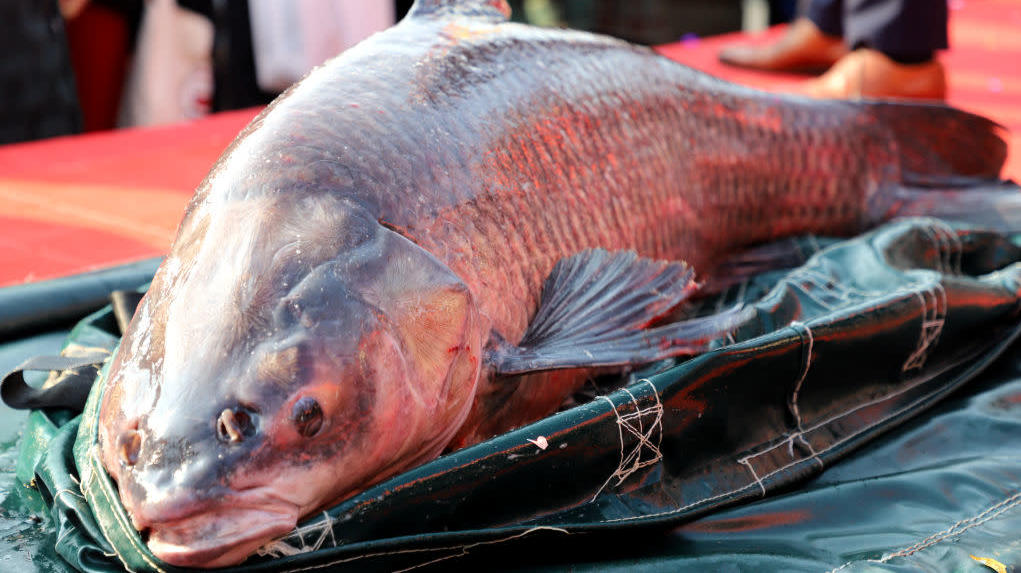There's A Carp Problem, But It's Nothing Skillful PR Can't Fix
A rose by any other name would smell as sweet. An Asian carp by any other name would... still smell like fish, but it might taste a little better than you were expecting. That's the gist of a new campaign to rebrand the Asian carp, making it more palatable for restaurant patrons in an attempt to reduce the invasive carp population.
According to USA Today, Asian carp were imported into the U.S. in the 1970s to eat the algae at wastewater treatment plants and help clean up catfish ponds. But the voracious carp escaped from those controlled environments, making their way into the Missouri and Illinois Rivers and leaving a trail of environmental mayhem in their wake. Now, the state of Illinois is desperately trying to keep the invasive species out of the Great Lakes. Enter the campaign to rename the fish, in the hopes of making it sound more appealing on restaurant menus.
Why rename the carp? For many seafood connoisseurs, Asian carp—a name that refers to bighead, black, grass, and silver carp—get a bad rap as a "mud fish." But the truth is that silver and bighead carp don't rummage through the mud at all. In reality, Asian carp are said to be both tasty and healthy. That's why Josina Morita, a commissioner with the Metropolitan Water Reclamation District and member of the Great Lakes Commission, launched the Asian Carp Challenge last fall in an effort to get Chicagoans to give the fish a try. ("If you can't beat 'em, eat 'em," the initiative's website proclaims.)
The carp's new name will be revealed this summer just before the Boston Seafood Show. It's also worth noting that this isn't the first time a fish has received a PR makeover: USA Today reports that in 1970, the U.S. National Marine Fisheries Service rebranded the deep-sea Slimehead as the orange roughy, a much tastier-sounding name. Any guesses as to the carp's new name? My money's on Big Ol' Silver Tastee Fish.
